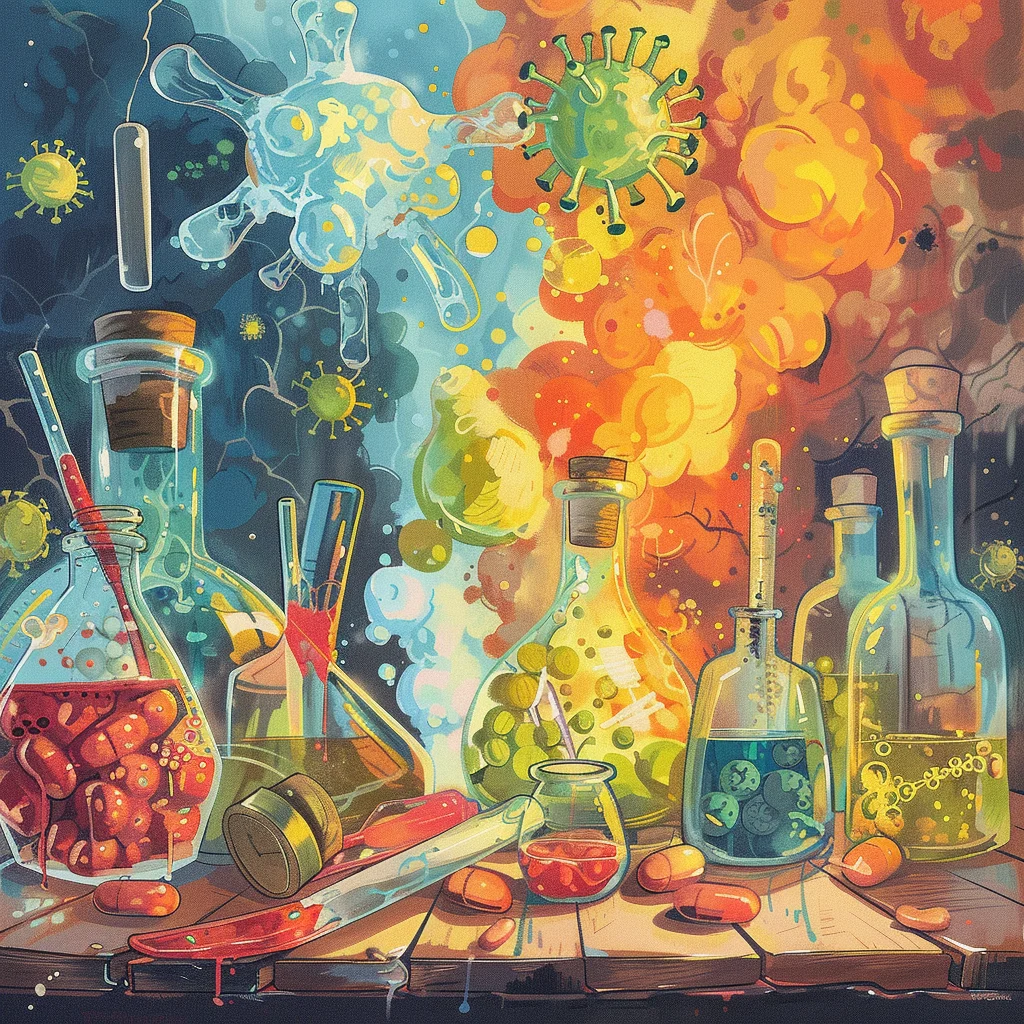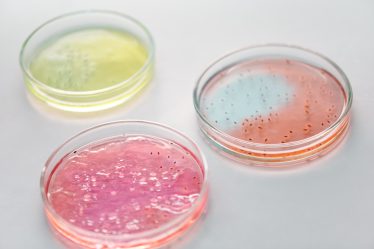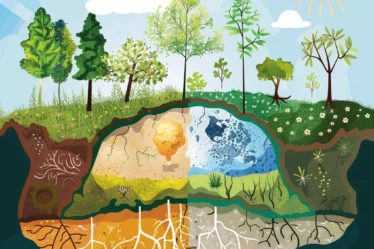
Toxins, those invisible threats living organisms produce, can disrupt biological processes and cause serious health issues.
We can find toxins in food, water, and even the air. Understanding how toxins work and their effects is vital for staying healthy. By learning about toxins, you can make smart choices about your environment and diet, preventing exposure and reducing the risk of toxin-related illnesses. Stay informed and protect yourself from these hidden dangers.
Essentials of Toxins and Toxicity
Short on time? Here are the must-know aspects of toxins types and toxins in the body:
🟠 Types of Toxins: Toxins can be natural (produced by organisms like plants, animals, fungi, and bacteria) or synthetic (chemicals like pesticides and industrial pollutants).
🟠 Toxins in Food: Common food toxins include aflatoxins from moldy crops, botulinum toxin in improperly canned foods, solanine in green potatoes, histamine in spoiled fish, and pesticide residues on produce.
🟠 Toxins in the Body: Toxins can accumulate in the liver, kidneys, and fat tissue, entering the body through ingestion, inhalation, or skin contact, and can cause health issues ranging from acute symptoms to chronic diseases.
Have trouble understanding toxin types and toxins in the body? That’s okay! Personalized tutoring or interactive biology classes can make these topics easier to understand. Explore more biology topics and broaden your knowledge with our free Biology blogs.
What are Toxins?
Toxins are substances, either natural or synthetic, that harm living organisms. Plants, animals, fungi, and bacteria produce natural toxins as a defense mechanism. Synthetic toxins are artificial chemicals introduced into the environment through industrial processes, agriculture, and other human activities. Both types can disrupt normal physiological functions, causing health issues. Examples of natural toxins are aflatoxins from mold and botulinum toxin from bacteria, while synthetic toxins include pesticides and industrial pollutants.
Importance of Understanding Toxins
Want to stay healthy and protect the environment? Understanding toxins is vital. Knowing which foods might harbor harmful toxins helps you prepare meals safely, reducing illness. Spotting environmental toxins means choosing natural cleaning products and avoiding polluted areas. Educating yourself about these dangers makes you better equipped to advocate for healthier, safer practices and policies.
Classification of Toxins
We classify toxins into various categories based on their origin and effects. This classification helps us understand the different sources and types of toxins, enabling better prevention and management strategies.
Difference Between Natural and Synthetic Toxins
Natural toxins originate from living organisms like plants, animals, fungi, and bacteria. These toxins act as defense mechanisms to deter predators, compete with other species, or inhibit microbial growth. Examples include aflatoxins from certain molds and botulinum toxin from Clostridium botulinum bacteria.
Synthetic toxins are human-made chemicals introduced into the environment through industrial and agricultural activities. These include pesticides, industrial pollutants, and chemical additives in food and products. Unlike natural toxins, synthetic toxins often stem from human activities and can persist in the environment, posing long-term risks to health and ecosystems.
Major Types of Toxins
Toxins come in various forms, each with unique sources and effects. Knowing the major types helps identify risks and implement safety measures. Here, we look at some of the most common and harmful toxins in both natural and human-made environments.
Aflatoxins
Aflatoxins are toxic compounds produced by certain molds, primarily Aspergillus species, that grow on crops like peanuts, corn, and tree nuts. These toxins are potent carcinogens and can cause liver damage. Aflatoxins are a significant concern in food safety, especially in regions with warm and humid climates where mold growth is prevalent.
Botulinum Toxin
Botulinum toxin is produced by the bacterium Clostridium botulinum. It is one of the most potent neurotoxins known. Botulinum toxin causes botulism, a severe and potentially fatal illness. The toxin blocks nerve functions, leading to paralysis. We can find Botulinum toxin in improperly canned or preserved foods, where the bacteria can grow in low-oxygen conditions.
Toxins in Food
Toxins in food can arise from various sources, including natural plant toxins, microbial contamination, and chemical residues. Examples include solanine in green potatoes, histamine in spoiled fish, and pesticide residues on fruits and vegetables. Understanding the sources and effects of food toxins is vital for ensuring food safety and reducing the risk of toxin-related illnesses.
Major Types of Toxins and Their Sources
| Type of Toxin | Source | Example |
| Aflatoxins | Moldy crops (peanuts, corn, tree nuts) | Aspergillus species |
| Botulinum Toxin | Improperly canned or preserved foods | Clostridium botulinum |
| Solanine | Green potatoes | Nightshade plants |
| Histamine | Spoiled fish | Bacterial decomposition |
| Pesticides | Fruits and vegetables | Agricultural chemicals |
Characteristics of Toxins
Toxins exhibit various characteristics that determine their impact on health and the environment. Understanding these characteristics helps identify and manage the risks associated with toxin exposure. This section delves into the standard features and diversity among toxins.
Common Features of Toxins
Regardless of their origin, toxins share several common features. We typically characterize them by their ability to harm living organisms, their specific modes of action, and their potential to accumulate in biological tissues.
Toxins can interfere with cellular functions, disrupt metabolic processes, and damage organs. The severity of their effects depends on factors like dosage, exposure duration, and the organism’s sensitivity.
Diversity Among Toxins
Toxins come from various sources and have different chemical structures and effects. They can be natural, like snake venom or bacterial toxins, or synthetic, like industrial chemicals and pesticides. Because of this diversity, toxins can cause anything from acute poisoning to long-term health problems. Understanding these differences is vital to creating effective prevention and treatment methods.
Aflatoxin: Sources and Effects
Aflatoxins are a group of toxic compounds produced by certain molds that contaminate crops. These toxins are a significant concern for food safety and public health. This section explores the physical characteristics of aflatoxins and their impact on health.
Physical Characteristics of Aflatoxin
Aflatoxins are mycotoxins produced by molds like Aspergillus flavus and Aspergillus parasiticus. These molds grow in warm, humid environments, contaminating peanuts, corn, and tree nuts. Aflatoxins are stable and resistant to high temperatures, making them hard to remove during food processing. They are usually colorless, odorless, and tasteless, which makes detecting contaminated food challenging.
Impact of Aflatoxin on Health
Aflatoxins are potent carcinogens and can cause severe health issues, particularly liver damage. Long-term exposure to low levels of aflatoxins can lead to liver cancer, while high doses can cause acute liver failure. Aflatoxins also suppress the immune system and are linked to stunted growth in children. Monitoring and controlling aflatoxin levels in food is essential to prevent these health risks.
Botulinum Toxin: Usage and Risks
Botulinum toxin, produced by the bacterium Clostridium botulinum, is one of the most potent neurotoxins known. Despite its toxicity, it has various medical and cosmetic applications. This section examines the structure and function of botulinum toxin and its uses.
Structure and Function of Botulinum Toxin
Botulinum toxin is a neurotoxic protein that blocks the release of acetylcholine, a neurotransmitter essential for muscle contraction. This action causes paralysis by preventing nerve signals from reaching muscles. The toxin consists of heavy and light chains, which work together to enter nerve cells and inhibit neurotransmitter release. There are several types of botulinum toxin, with types A and B being the most commonly used in clinical settings.
Medical and Cosmetic Uses of Botulinum Toxin
Despite its toxicity, botulinum toxin has valuable uses in medicine and cosmetics. It treats conditions like chronic migraines, muscle spasms, and excessive sweating. In cosmetics, botulinum toxin, or Botox, helps reduce facial wrinkles by temporarily paralyzing specific muscles. While effective, it carries risks such as allergic reactions and unintended muscle paralysis, so trained professionals must administer it.
Toxins in Food: What to Watch Out For
Food can harbor various toxins that pose health risks. Awareness of these common toxins and learning ways to reduce exposure can help you maintain a safer diet. This section discusses the typical toxins in food and how to minimize their presence.
Common Toxins Found in Food
Food can contain natural toxins like solanine in green potatoes, histamine in spoiled fish, and aflatoxins in moldy grains and nuts. Synthetic toxins, such as pesticide residues on fruits and vegetables, pose risks. Microbial toxins, like botulinum toxin in improperly canned foods, are another concern. These toxins can lead to foodborne illnesses and long-term health issues.
- Aflatoxins in moldy grains and nuts
- Botulinum toxin in improperly canned foods
- Solanine in green potatoes
- Histamine in spoiled fish
- Pesticide residues on fruits and vegetables
Toxicity: Understanding its Meaning
Toxicity refers to the degree to which a substance can harm living organisms. This concept is crucial in assessing the safety of various substances we encounter daily. This section explains what toxicity is and how it is measured.
What is Toxicity?
Toxicity is a substance’s capacity to harm organisms. It depends on dose, exposure duration, and the organism’s sensitivity. A substance can be toxic at high doses but harmless or even beneficial at low doses. Understanding toxicity helps evaluate the potential risks associated with chemicals and other substances.
Measuring Toxicity Levels
Toxicity levels are typically measured using tests that determine the lethal dose (LD50), which is the amount of a substance that kills 50% of a test population. Other methods include chronic toxicity tests that assess long-term effects. These measurements help establish safety guidelines and regulatory limits for exposure to toxins, ensuring public health protection.
Toxins in the Body
Toxins can enter your body in different ways and cause various health problems. Toxins can come from eating contaminated food, drinking polluted water, breathing in polluted air, and skin contact with toxic substances. Once inside, they can build up in your organs and tissues, leading to damage over time.
The effects on your health depend on the type and amount of exposure. Short-term exposure can cause symptoms like nausea, vomiting, and dizziness, while long-term exposure might lead to severe issues such as cancer, liver damage, and neurological problems. Your body’s ability to detoxify and eliminate these toxins plays a significant role in reducing these risks.
Tips for Learning About Toxins and Toxicity
We explored toxins, their types, and how they affect health. We covered natural and synthetic toxins, aflatoxins, and botulinum toxin. Understanding toxins in food and how they enter the body helps us stay healthy.
For better learning, think about getting a tutor or joining tutoring sessions. A good biology class or a private teacher can help you understand more. By learning about toxins, you can make smarter choices to keep yourself and the environment safe from harmful substances.
If you’re looking for a biology tutor, try searching for “biology tutor Liverpool” or “biology teacher London” on a platform like meet’n’learn. This can help you find the perfect private teacher for your needs.
If you prefer learning in a group, search for “biology classes Leeds” or “biology lessons Birmingham” online. You’ll find options at community colleges or educational workshops.
FAQs on Toxins and Toxicity
1. What are toxins?
Toxins are harmful substances produced by living organisms or synthetic chemicals.
2. How do toxins enter the body?
Toxins enter the body through ingestion, inhalation, or skin contact.
3. What are the effects of toxins on health?
Toxins can cause acute symptoms like nausea and long-term issues like cancer.
4. What are common toxins found in food?
Common toxins in food include aflatoxins, botulinum toxin, solanine, histamine, and pesticide residues.
5. What is aflatoxin?
Aflatoxin is a toxic compound produced by certain molds that contaminate crops like peanuts and corn.
6. What is botulinum toxin?
Botulinum toxin is a potent neurotoxin produced by Clostridium botulinum bacteria, often found in improperly canned foods.
7. What is toxicity?
Toxicity is the degree to which a substance can harm living organisms.
8. Which toxins are found in the body?
Toxins found in the body can include heavy metals, pesticides, and industrial chemicals.
References:
1. Wikipedia
2. Britannica
3. WHO



